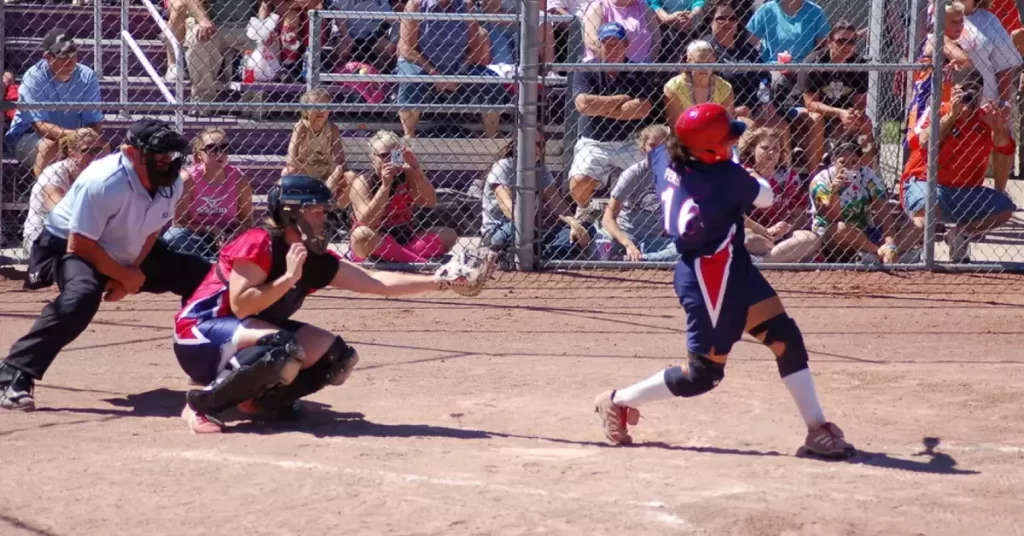The world of softball is filled with excitement and camaraderie. Players with various skill levels come together to enjoy this popular sport. Among the many positions on the field, some may appear easier than others, but each has its own challenges.
Surprisingly, the easiest position in softball is the right field. Players in this position often face fewer balls and less pressure compared to other positions. However, this doesn’t mean right fielders can slack off; they still need to master specific skills to contribute effectively to their team.
Mastering the art of playing in right field can boost your confidence and enhance your softball experience. So, if you’re new to the sport or looking to improve your game, continue reading to discover valuable tips and techniques to excel in the easiest position in softball.
Understanding Softball Positions
The Infield Positions
First Baseman (1B):
- The first baseman’s primary responsibility is to catch throws from other infielders and tag out the opposing team’s batter-runner. This position requires good hand-eye coordination and the ability to stretch and catch throws quickly.
Second Baseman (2B):
- The second baseman covers the area between first and second base, fields ground balls, and participates in double plays. Players in this position need quick reflexes and strong throwing arms.
Shortstop (SS):
- The shortstop is a vital position in softball, typically placed between second and third base. This player fields ground balls, turns double plays, and covers second base on stolen base attempts. Quick reflexes, agility, and a strong arm are essential for a successful shortstop.
Third Baseman (3B):
- The third baseman plays close to the third base, fields ground balls, and catches line drives. They are also responsible for covering bunts and making long throws to first base. Players in this position need a strong arm and quick reflexes.

The Outfield Positions
Left Fielder (LF):
- The left fielder is responsible for covering the left side of the outfield, catching fly balls, and fielding ground balls. Speed, strong throwing arm, and good judgment are essential skills for this position.
Center Fielder (CF):
- The center fielder is often considered the “captain” of the outfield due to their central location and the need to coordinate with the other outfielders. This position requires speed, a strong throwing arm, and excellent judgment to cover a large area of the field.
Right Fielder (RF):
- The right fielder covers the right side of the outfield, catching fly balls and fielding ground balls. Similar to the left fielder, this position requires speed, a strong throwing arm, and good judgment.
The Battery
Pitcher (P):
- The pitcher’s role is to throw the ball to the batter in an attempt to get them out. Pitching demands strong arm strength, accuracy, and mental toughness.
Catcher (C):
- The catcher’s job is to receive the pitcher’s throws, relay signals to the pitcher, and play defense at home plate. This position requires agility, strong arm strength, and excellent communication skills.
Which Position is the Easiest?
In terms of physical effort and technical skill, the right fielder position may be considered the easiest in softball. This position usually sees less action than other positions and does not require as many specialized skills.
However, it is essential to note that every position in softball contributes to the team’s success, and no position should be considered “easy” in the traditional sense.
FAQs
Q1: How can I determine which position is best for me?
A: Consider your strengths and weaknesses, as well as your personal preferences. If you have a strong arm and quick reflexes, an infield position may be more suitable. If you prefer to cover a larger area and have good judgment on fly balls, an outfield position might be a better fit.
Q2: How do I improve my skills in the easiest position in softball?
A: Even if a position is considered “easy,” there is always room for improvement. Practice is key. Focus on improving your footwork, hand-eye coordination, and communication with teammates. You can also seek advice from experienced players or coaches to improve your skills.
Q3: Is the easiest position in softball less important than other positions?
A: No, every position in softball is important and contributes to the success of the team. Even if a position is considered “easy,” it still requires skill and knowledge to play well.
Additionally, players may have different strengths and weaknesses, so the “easiest” position for one player may not be the same for another.
Conclusion
As we wrap up our exploration of the easiest position in softball, it’s important to remember that each position has its own unique challenges. While the right field may appear simpler, success comes from dedication, practice, and teamwork.
Embrace the opportunity to play right field and use it as a stepping stone to further develop your skills.
Ultimately, the goal is to have fun and contribute to your team’s success, regardless of your position on the field. So, get out there, give it your all, and enjoy the game of softball to the fullest!
